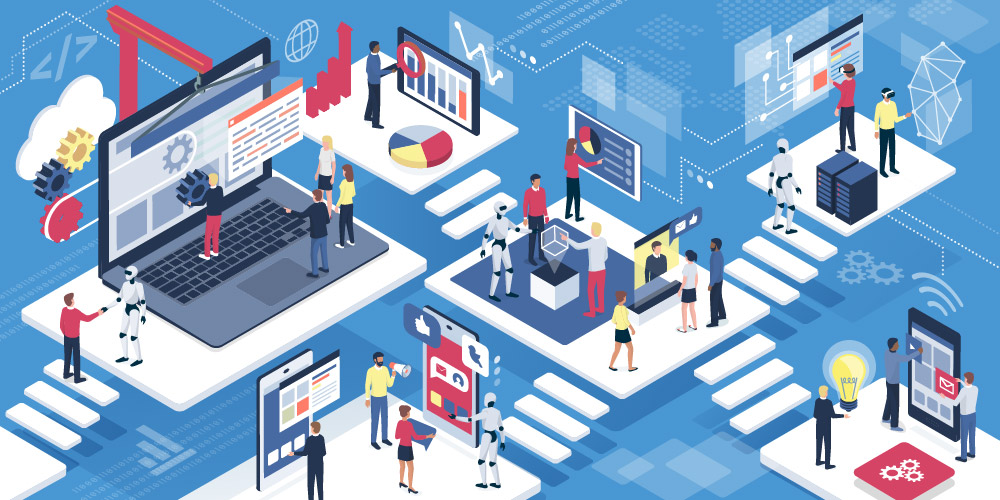How AI can put brands back on top

In the face of competition from private label, new brands and online fulfilment, which is stressing margins, consumer brands will need new ways to work with retail partners to optimise allocation and replenishment, says Alex Barnes from antuit.ai.
Consumer brands can be forgiven for wondering how so many challenges came together in 2020 to form what looks like a single giant and insurmountable obstacle. And behind the list sits a mountain of commentary as to the scale of the problem and the difficulties in addressing them without losing margin, market share and brand equity with both consumers and shareholders.
At the heart of the problem is a paradox; how will brands use static or even shrinking marketing budgets to cope with so many changes in the market that will be costly to keep pace with. First of all, how to maintain distinctiveness across an ever-growing number of channels to consumers whose behaviour has changed? During the pandemic and now post-Covid, they spend more time at home, buy more online, and have heightened concerns over their diet, health, and future prospects.
Covid stimulates D2C and off brands
Brands also have the challenge of redefining their relevance to this changed consumer who, confined to home during the pandemic, was favouring solutions and availability over brand names. A McKinsey report suggests 75% of US consumers tried a new shopping behaviour in 2020 while 36% tried a new product brand, and 25% incorporated a new private-label brand.
Brands also lost out because they could not fulfil demand during warehouse closures or a lack of stock, which opened the door to private labels getting directly in front of consumers. This, along with the closure of restaurants and fast food outlets, opened the door to new brands going direct, brands that were already growing before the pandemic. According to Amcor, 36% of consumers in the Netherlands and 26% in the UK were subscribed up to food delivery companies in 2019. In April to May 2020, according to a report by the Food Foundation, over 500 British vegetable box providers, with waiting lists ranging from 160 to 6,700 customers, delivered 3.5 million boxes of fresh produce to homes – more than double their usual sales.
For most other brands just embarking on the D2C voyage, they are already recognising that their lack of digital expertise, poor access to consumer data and almost no understanding of the dynamics of some of the newest channels, such as TikTok, is holding them back.
Meanwhile, the competition is not sitting still. Nielsen talked about the rise of private label back in 2018, and while this has been new business for the many brands that make these white label products, they have also squeezed prices for brands that are not supported with more and more trade promotions. Private label is also a self-harming opportunity for brands that risk them competing for shelf space or even cannibalising the brand.
However, much of this focus on new channels may prove to be a distraction as brands are still largely dependent on retail channels and Nike is a conspicuous outlier. Working with retailers to protect and grow margin for both parties in this new world will depend on an ability to balance allocation and replenishment across all of these channels, recognising the bewildering number of variables.
Revenue growth management (RGM) teams, therefore, have the challenge of trying to drive sustainable, profitable growth through a range of strategies around assortment, promotions, trade management, and pricing. First of all, they are bringing together the often siloed functions of pricing, marketing, assortment, and trade to capitalise on existing and future market share by working together with a single view of account growth and return on investment.
RGM looks to sense consumption
RGM can then work with Demand Planning to build consumption sensing models. Consumption Sensing is a forecasting approach that focuses on anticipating consumer demand to keep pace with market changes, changes that are continuous and often dramatic which means forecasting based on history is no longer the dominant indicator it once was.
Consumption Sensing, therefore, relies on other external data and integrates it with historical data into an artificial intelligence (AI) model to anticipate what consumers will want in the future. Data sets could include employment reports, economic indicators, and social sentiment, as well as non-sales eCommerce data such as views, clicks, and ratings.
The AI model is able to work at speed and depth to analyse consumption shifts and future trends, and then determine which stores or channels need to carry what.
These new, hyper-localised AI models can also be used to simulate hyper-localized pricing and response to promotions. By leveraging both price elasticities and promotional drivers, and a future, consumer-centric view of demand, CPG companies can anticipate what level of base pricing will maintain or grow market share.
They can also determine the best trade promotion investments for the given period based upon ROI and business growth. Consumption Sensing also extends to assortment planning, where companies can anticipate changes and their effect on sustaining loyalty or acquiring new consumers. The ability to make these decisions at a very granular level and focusing decisions that are independent by store and/or channel helps achieve this goal.
READ MORE:
- Inside Mimecast’s The State Of Brand Protection 2021
- ServiceNow delivers new security integrations with Microsoft
- Microsoft and Darktrace join forces to provide self-learning AI cybersecurity to users
- What can corporates learn from digital transformation in the COVID era?
CPG companies have always sought to optimise the performance of all the disciplines within demand planning, and now armed with AI models and a more collaborative approach based around shared views of data, they can start to regain ground lost during the pandemic and go for growth, knowing that even constrained budgets will deliver the best return.
For more news from Top Business Tech, don’t forget to subscribe to our daily bulletin!
